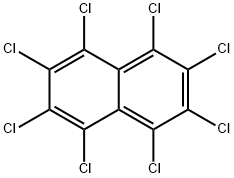PRODUCT Properties
| Melting point: | 57-60 °C |
| Boiling point: | 256 °C |
| Density | 1.1377 |
| vapor pressure | 0.40 at 59.0 °C (Verevkin, 2003) |
| refractive index | 1.6079 |
| Flash point: | 125 °C |
| storage temp. | Sealed in dry,Room Temperature |
| solubility | Soluble in chloroform, carbon disulfide (Windholz et al., 1983), and many other halogenated
liquid solvents (e.g., methylene chloride). |
| form | Crystalline Powder |
| color | White to almost white |
| Water Solubility | insoluble |
| Merck | 2150 |
| Henry's Law Constant | 3.31 x 10-4 atm?m3/mol at 25 °C (gas stripping-UV spectrophotometry, Shiu and Mackay, 1997) |
| Dielectric constant | 5.0(24℃) |
| CAS DataBase Reference | 91-58-7(CAS DataBase Reference) |
| NIST Chemistry Reference | Naphthalene, 2-chloro-(91-58-7) |
| EPA Substance Registry System | 2-Chloronaphthalene (91-58-7) |
Description and Uses
2-Chloronaphthalene was used as a reagent in the enantioselective synthesis of heterocyclic ketones with α-chiral quaternary stereocentres. When used as a processing additive in bulk heterojunction solar cells, it doubles its power conversion efficiency.
Safety
| Symbol(GHS) |  GHS09 |
| Signal word | Danger |
| Hazard statements | H411 |
| Precautionary statements | P273-P391-P501 |
| Hazard Codes | Xi,T,F |
| Risk Statements | 36/37/38-39/23/24/25-23/24/25-11 |
| Safety Statements | 37/39-26-45-36/37-16-7 |
| RIDADR | UN1230 3/PG 2 |
| WGK Germany | 3 |
| RTECS | QJ2275000 |
| HS Code | 29039990 |
| Hazardous Substances Data | 91-58-7(Hazardous Substances Data) |
| Toxicity | Acute oral LD50 for rats 2,078 mg/kg, mice 886 mg/kg (quoted, RTECS, 1985). |





